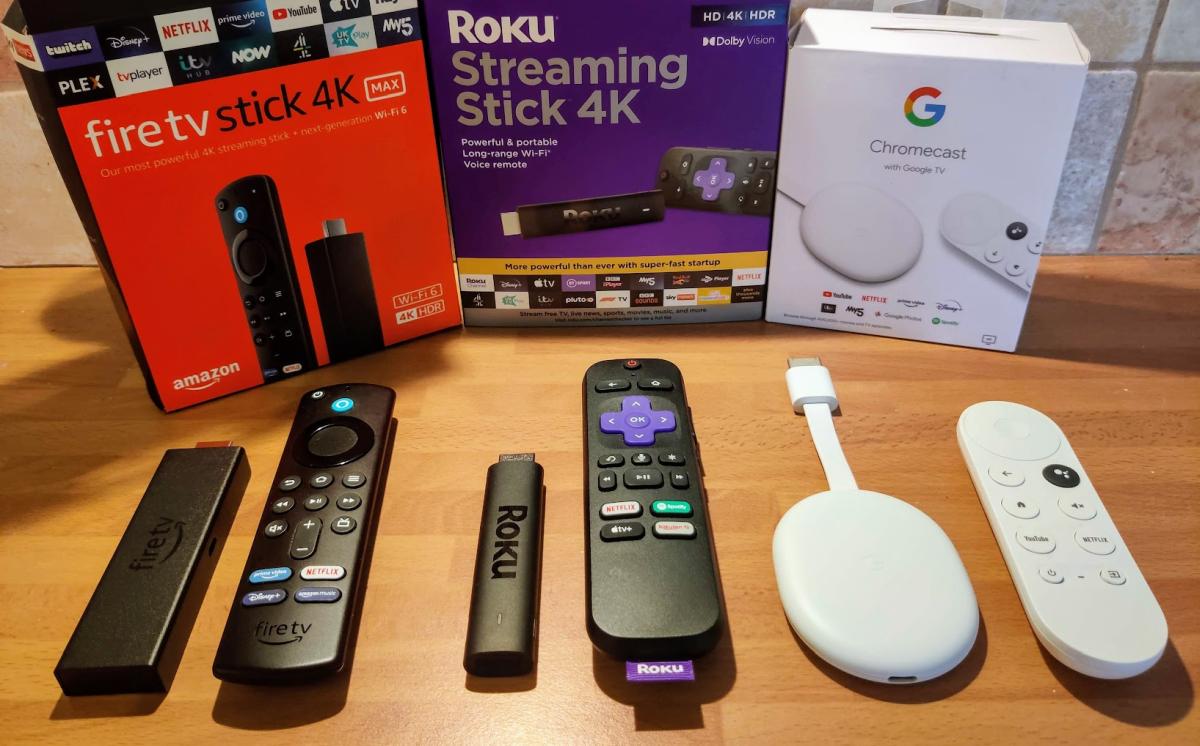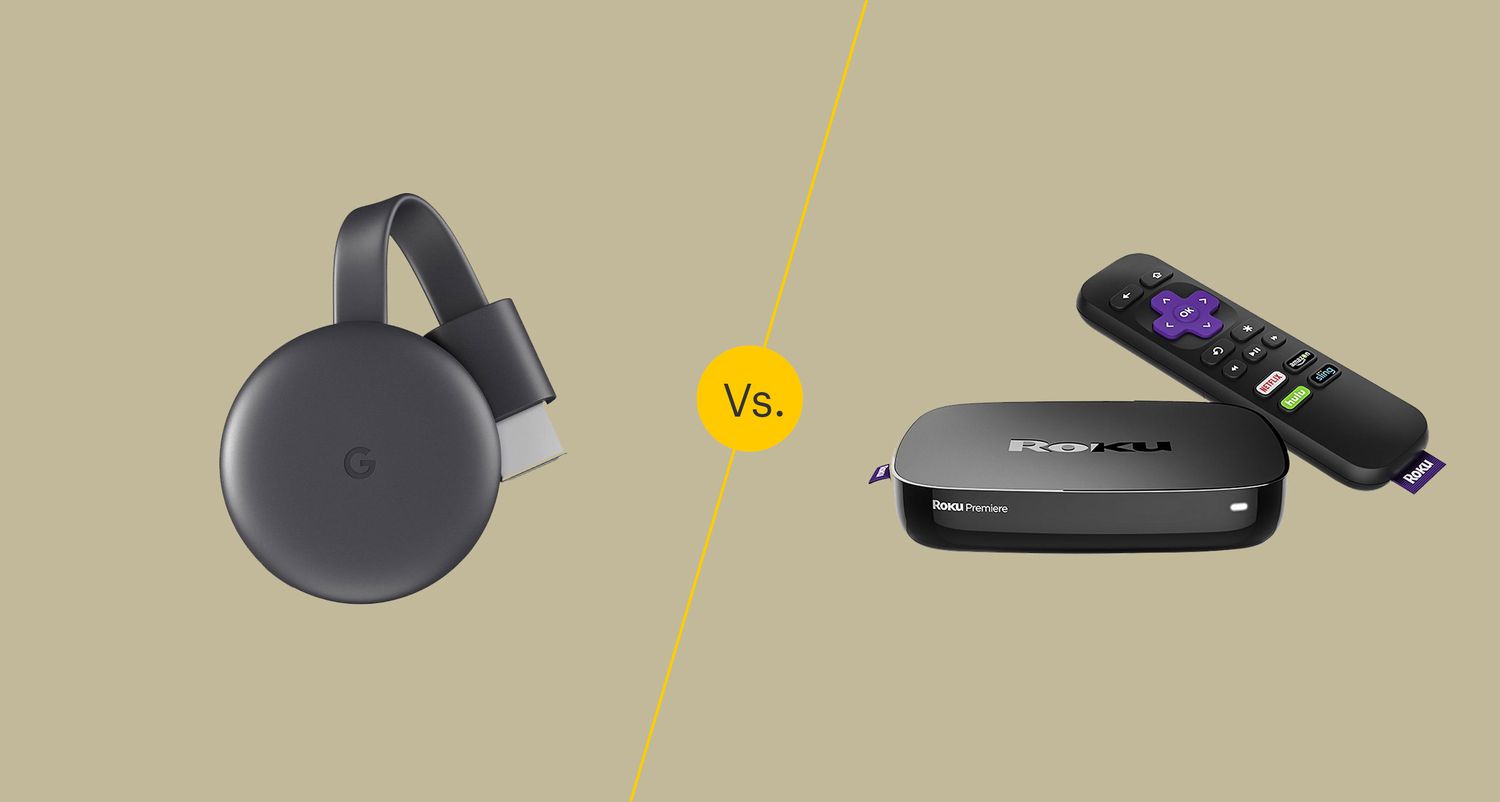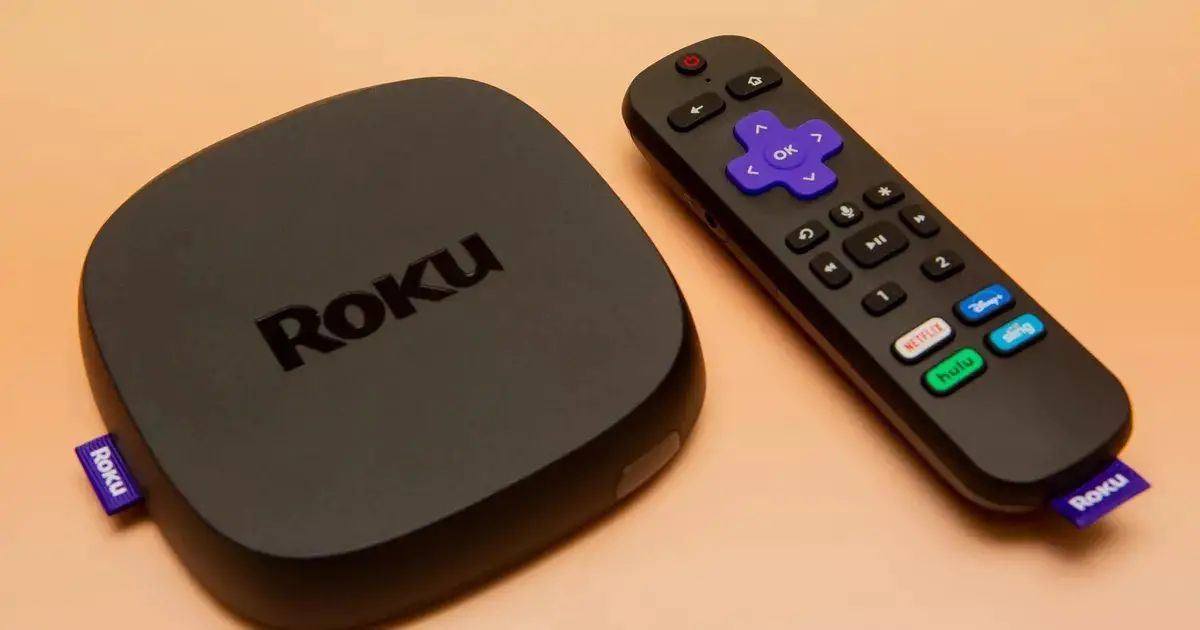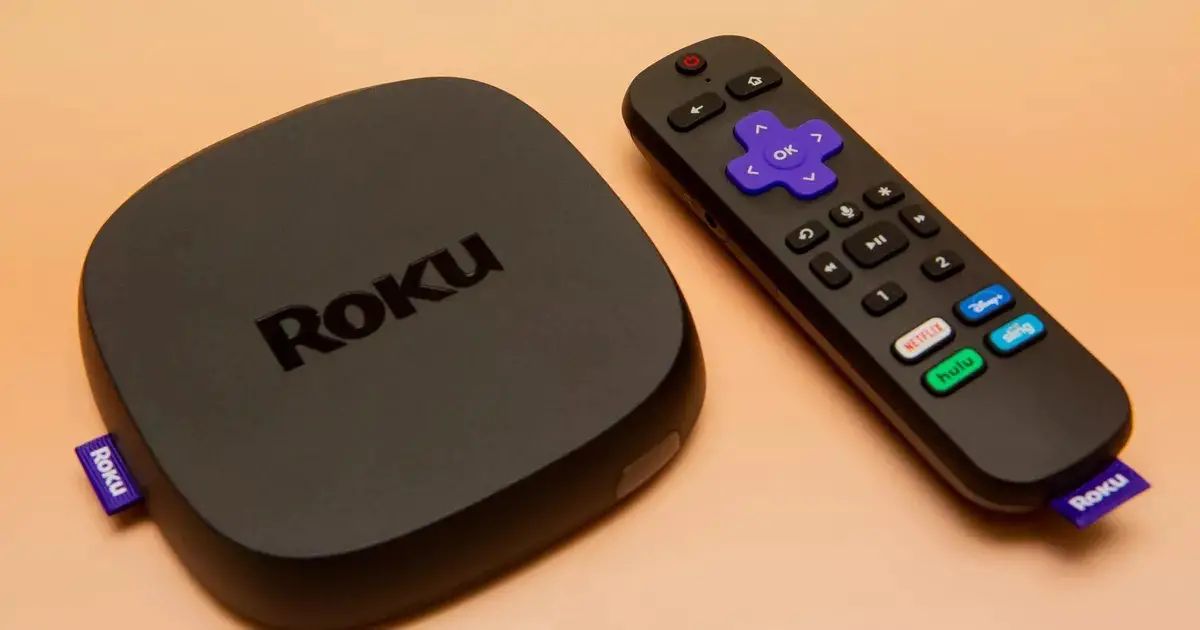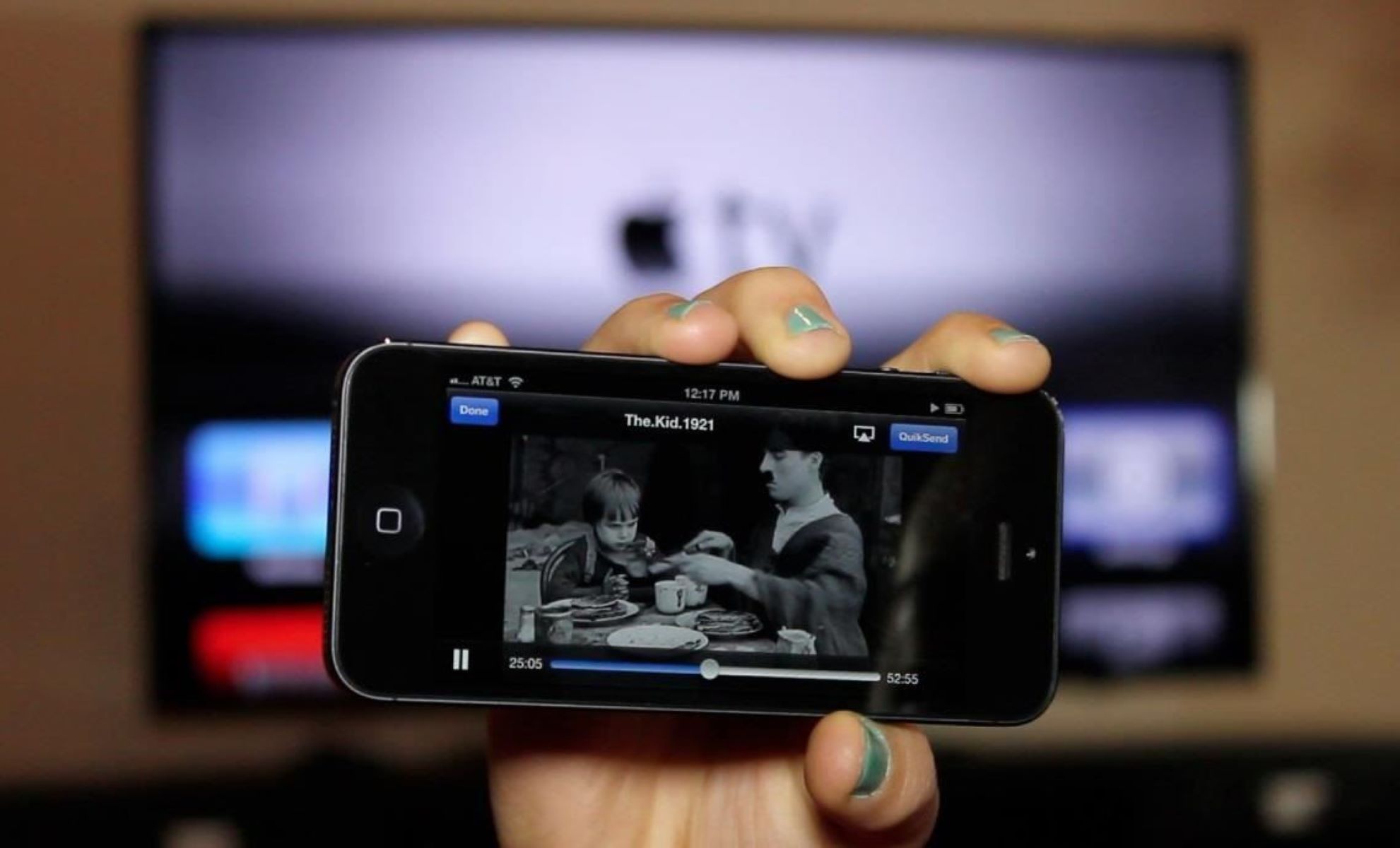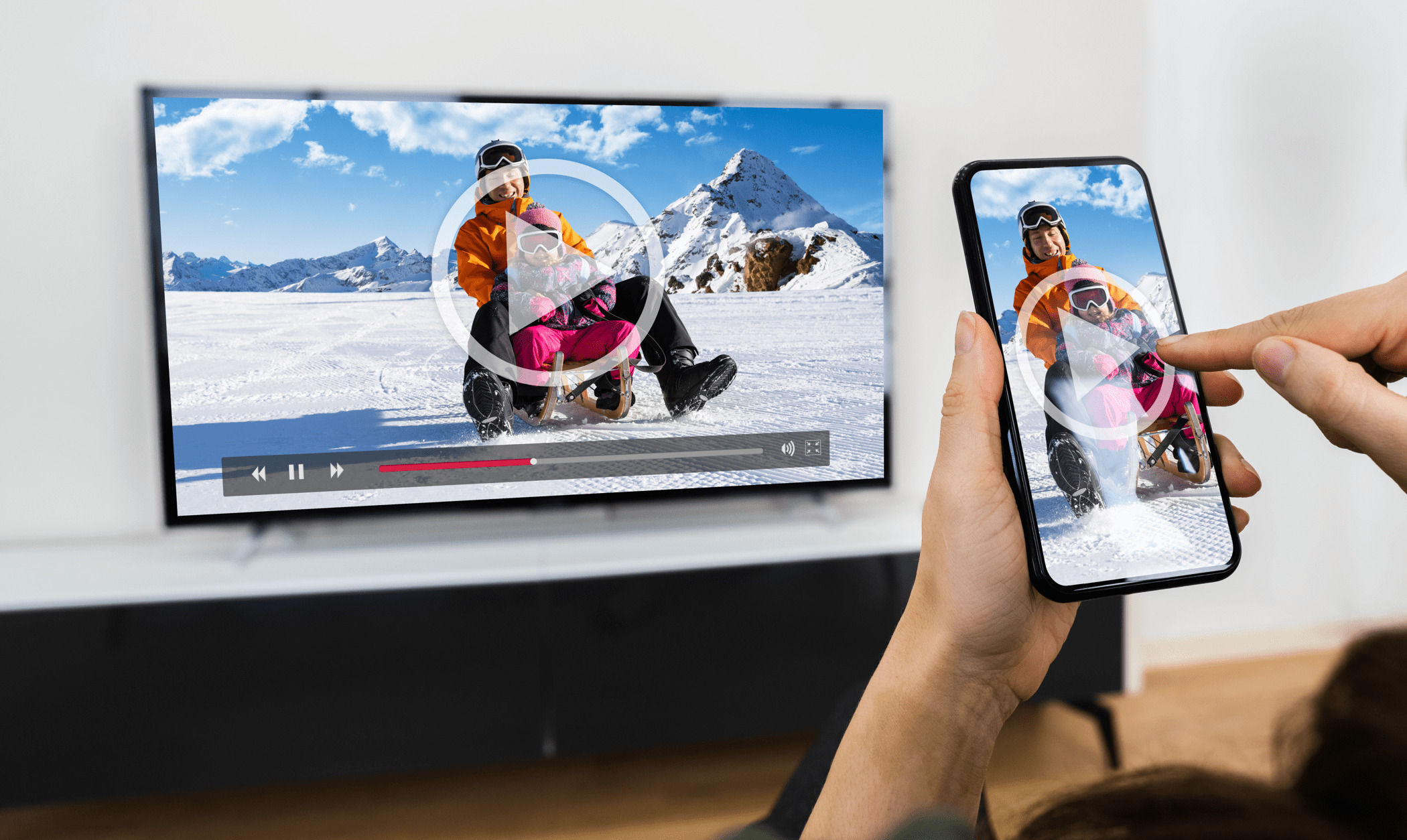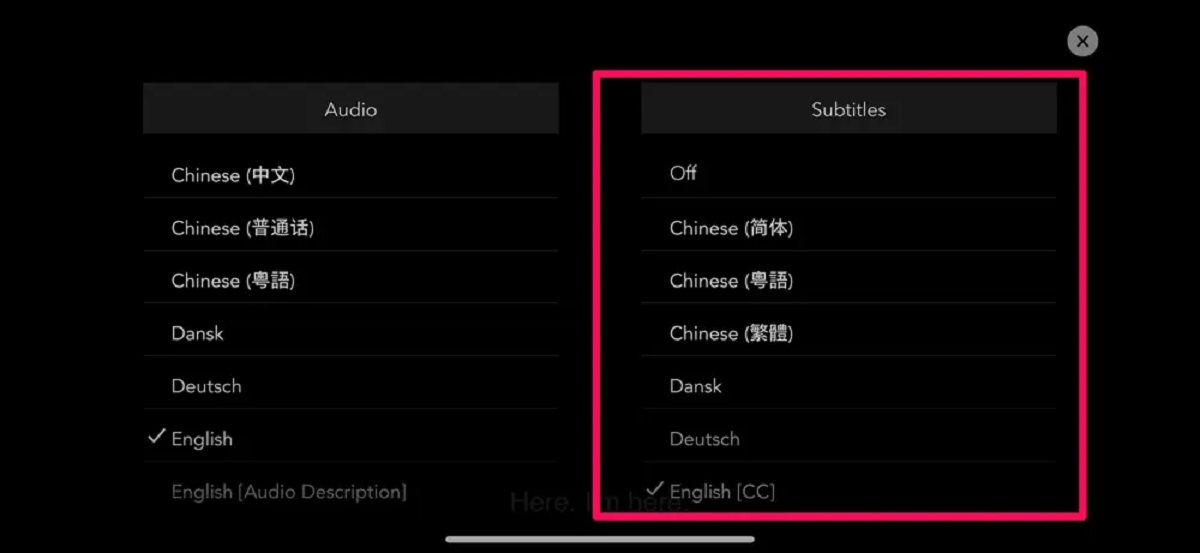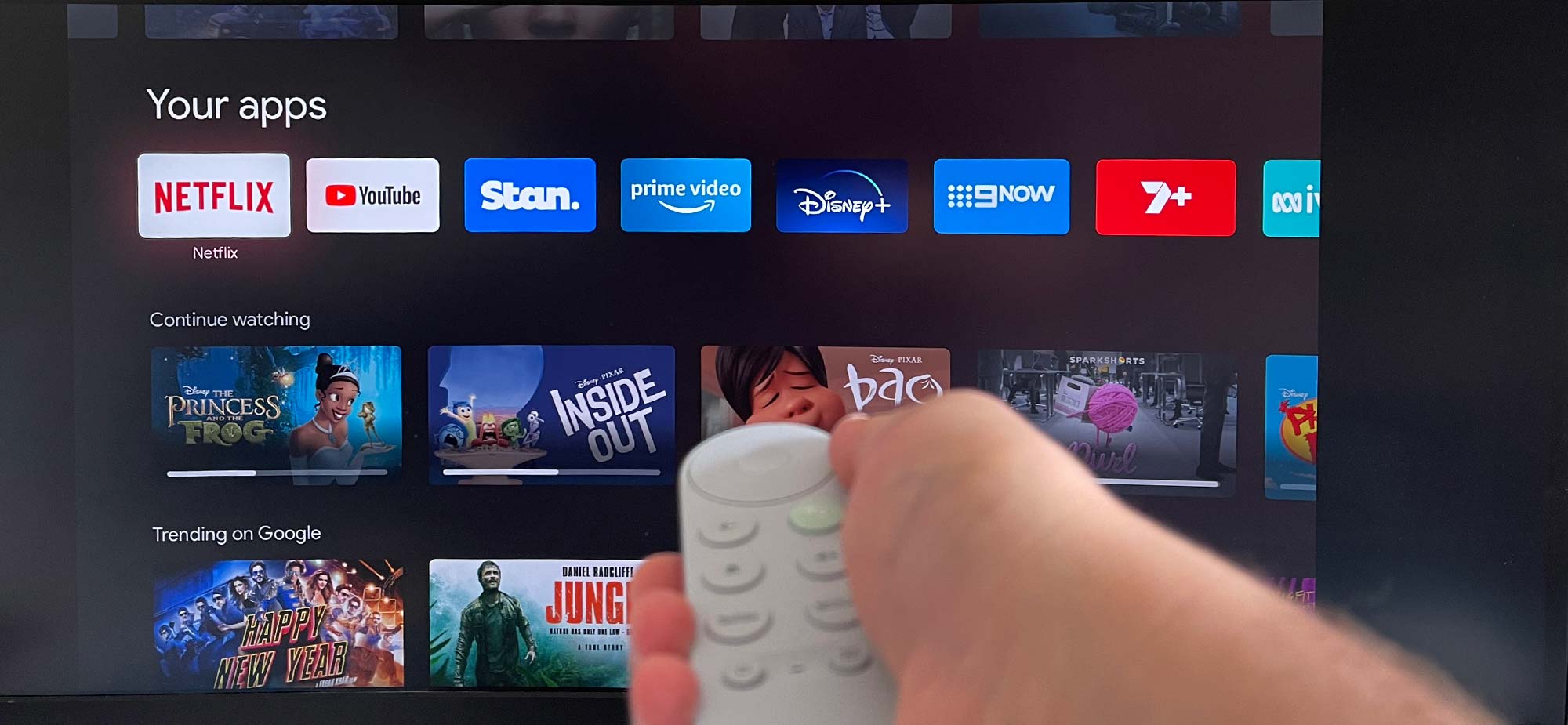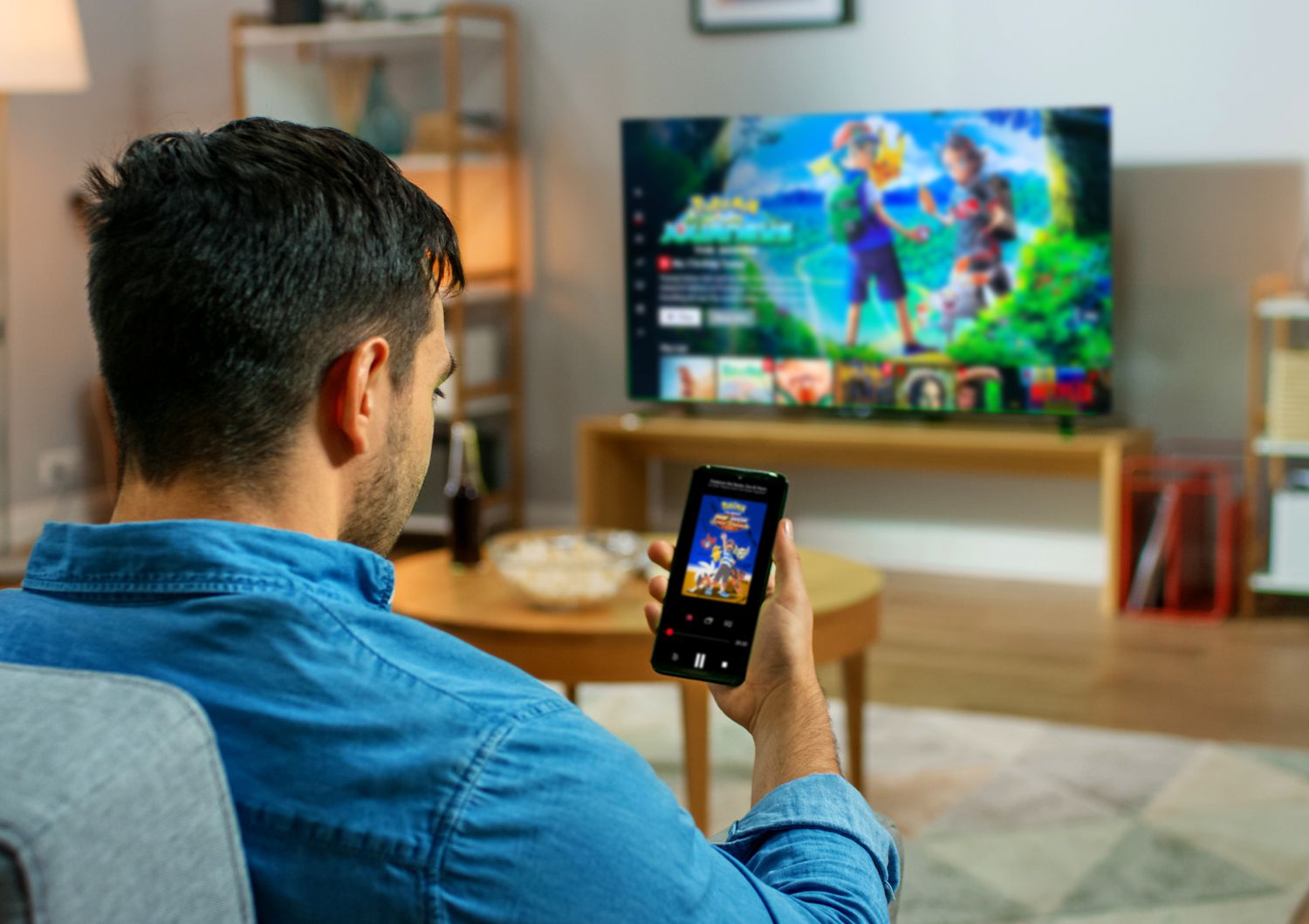Introduction
Streaming devices have revolutionized the way we consume entertainment, bringing countless hours of movies, TV shows, and music to our fingertips. Two of the most popular streaming devices on the market are Roku and Chromecast. Both offer users the ability to stream a wide range of content directly to their TVs, but which one is better? In this article, we will compare the features, pricing, content availability, user interface, setup, streaming quality, remote control options, and compatibility with other devices of Roku and Chromecast to help you make an informed decision about which one to choose.
Roku and Chromecast are both highly-regarded streaming devices that cater to different needs and preferences. While Roku is a standalone device with its own operating system, Chromecast is a dongle that allows you to cast content from your mobile device or computer. However, despite their differences in form and functionality, both devices have their own strengths and weaknesses.
In the following sections, we will explore the key features and benefits of Roku and Chromecast, diving into their performance, ease of use, and overall value for money. By the end of this article, you’ll have a clearer understanding of which streaming device suits your needs and preferences.
Note that the final decision will ultimately depend on your specific requirements and preferences. Both Roku and Chromecast have their own unique features and advantages, so it’s important to consider what matters most to you: the breadth of content options, ease of use, affordability, or integration with other smart devices. Now, let’s delve into the features of Roku and Chromecast to determine which one is the best fit for you.
What is Roku?
Roku is a popular streaming device that allows you to connect your TV to a variety of streaming services and channels. It is a standalone device that operates using its own user-friendly interface. With Roku, you can access an extensive library of streaming content, including popular services like Netflix, Hulu, Amazon Prime Video, and more.
One of the key advantages of Roku is its versatility. It offers several different models, ranging from basic streaming sticks to more advanced devices with 4K and HDR capabilities. This means that regardless of your TV setup or budget, there is likely a Roku device that can meet your needs.
Roku devices are known for their simplicity and ease of use. The interface is straightforward and intuitive, making it easy to navigate and find your favorite content. The home screen provides a personalized experience, allowing you to customize it with your preferred channels and apps for instant access to your most-watched shows and movies.
Another noteworthy feature of Roku is its extensive channel selection. The Roku Channel Store offers thousands of channels, both free and paid, covering a wide range of genres and interests. This means that no matter what type of content you enjoy, from movies and TV shows to news, sports, and even niche interests, Roku has you covered.
Roku also offers a voice control feature, allowing you to search for content, launch channels, and control playback using voice commands. This hands-free functionality adds convenience and enhances the overall user experience.
In terms of streaming quality, Roku devices support high-definition (HD) and 4K Ultra HD content, providing crisp and vibrant visuals for a truly immersive viewing experience. The streaming quality is consistent and reliable, ensuring that you can enjoy your favorite shows and movies without interruptions.
Setting up a Roku device is a breeze. Simply connect it to your TV using an HDMI cable, connect to your home Wi-Fi network, and follow the on-screen prompts to complete the setup process. Roku also offers a mobile app that you can use as a remote control, as well as additional features like private listening, screen mirroring, and more.
Overall, Roku is a robust streaming device that offers a wide range of features, extensive content options, and user-friendly interface. It provides a seamless streaming experience, making it a popular choice among streamers worldwide. Whether you’re a casual viewer or a cord-cutter looking to replace traditional cable, Roku has the flexibility and performance to meet your needs.
What is Chromecast?
Chromecast is a streaming device developed by Google that allows you to stream content directly from your mobile device or computer to your TV. Unlike Roku, Chromecast is a dongle that plugs into the HDMI port of your TV and connects to your home Wi-Fi network. It is controlled through a mobile app or a compatible device that acts as a remote control.
One of the main advantages of Chromecast is its simplicity. The device itself has no interface or remote control; instead, you control it through your smartphone, tablet, or computer. By using compatible apps on your device, such as Netflix, YouTube, Hulu, or Spotify, you can cast content to your TV with just a few taps or clicks.
Chromecast supports a wide array of streaming services, providing access to a vast library of movies, TV shows, and music. It also supports casting from the Chrome browser, allowing you to mirror your browser tab or cast any web content directly to your TV.
One of the standout features of Chromecast is its ability to create a multi-room audio system. With the Chromecast Audio device, you can connect multiple speakers throughout your home and play synchronized music in different rooms. This makes it ideal for parties or for enjoying a seamless audio experience in your home.
Chromecast offers support for high-definition (HD) and 4K Ultra HD content, providing crisp visuals and immersive viewing experiences. However, it’s important to note that the streaming quality of Chromecast is dependent on the strength and stability of your Wi-Fi connection. A weaker Wi-Fi signal may result in buffering or reduced video quality.
Setting up Chromecast is a straightforward process. Simply plug the Chromecast dongle into your TV’s HDMI port, connect it to your Wi-Fi network using the Google Home app, and follow the on-screen instructions. Once set up, you can start casting content from supported apps directly to your TV.
Another notable feature of Chromecast is its compatibility with Google Assistant and voice control. This allows you to control playback, adjust volume, and even search for content using voice commands. Integration with other Google Home devices also allows for seamless smart home integration.
Overall, Chromecast offers a user-friendly, wireless streaming experience that seamlessly integrates with your existing devices and services. Its simplicity and versatility make it a popular choice among those who want to easily cast their favorite content to their TV without the need for a dedicated interface or remote control. Whether you’re streaming movies, watching YouTube videos, or listening to music, Chromecast delivers a convenient and enjoyable streaming experience.
Features of Roku
Roku offers a wide range of features that enhance your streaming experience and make it one of the top choices for streaming enthusiasts. Here are some key features of Roku devices:
- Extensive Content Selection: Roku provides access to a vast library of streaming channels, including popular services like Netflix, Hulu, Amazon Prime Video, Disney+, and more. With over 500,000 movies, TV episodes, and other content options, you’ll never run out of things to watch.
- User-Friendly Interface: The Roku user interface is designed to be intuitive and straightforward, making it easy to navigate and find the content you want to watch. The customizable home screen allows you to prioritize your favorite channels and apps for quick and easy access.
- Multiple Device Options: Roku offers a variety of devices to suit different needs and budgets. From compact streaming sticks to more advanced set-top boxes, there is a Roku device for every TV setup.
- 4K and HDR Support: Many Roku models support 4K Ultra HD and HDR content, providing stunning visuals and vibrant colors for a more immersive streaming experience.
- Voice Control: Roku devices offer voice control capabilities, allowing you to search for content, launch channels, and control playback using voice commands. This hands-free feature adds convenience and makes navigating the interface even easier.
- Private Listening: Roku devices come with a remote control that includes a built-in headphone jack. This allows you to watch your favorite shows and movies without disturbing others by plugging in your headphones and enjoying private listening.
- Screen Mirroring: With Roku, you can mirror the screen of your smartphone, tablet, or computer directly to your TV. This feature is useful for sharing photos, videos, presentations, and more with friends and family on the big screen.
- Streaming Quality and Performance: Roku devices deliver reliable and high-quality streaming, ensuring smooth playback and minimal buffering. The performance is consistent, thanks to the powerful processors and optimized software.
These are just some of the features that make Roku a top choice among streaming enthusiasts. Whether you’re looking for a wide selection of content, user-friendly interface, or advanced streaming capabilities, Roku devices provide an excellent streaming experience that caters to diverse needs and preferences.
Features of Chromecast
Chromecast offers a range of features that make it a popular choice for streaming content directly from your mobile device or computer to your TV. Here are some key features of Chromecast:
- Wireless Casting: Chromecast allows you to wirelessly cast content from your mobile device, tablet, or computer to your TV. Simply connect the Chromecast dongle to your TV’s HDMI port and use compatible apps to cast movies, TV shows, music, and more to the big screen.
- Mobile Control: Chromecast is controlled through a mobile app, available for both iOS and Android devices. The app acts as a remote control, allowing you to browse and select content, control playback, adjust volume, and even mirror your device’s screen.
- Supported Apps: Chromecast supports a wide range of popular streaming apps, including Netflix, YouTube, Hulu, Spotify, and many more. You can easily cast content from these apps to your TV for a seamless streaming experience.
- Chromecast Audio: With Chromecast Audio, you can create a multi-room audio system by connecting multiple speakers throughout your house. This allows you to play synchronized music or different tracks in each room, making it perfect for parties or creating an immersive audio experience.
- Mirror Your Screen: In addition to casting content from supported apps, Chromecast also allows you to mirror your device screen to your TV. This is useful for sharing presentations, photos, videos, or any other content that is not directly supported by a casting app.
- Voice Control: Chromecast is compatible with Google Assistant, allowing you to control playback, adjust volume, and even search for content using voice commands. This hands-free feature adds convenience and makes controlling your streaming experience even easier.
- Integration with Google Ecosystem: If you’re already using other Google smart devices, Chromecast seamlessly integrates with the Google ecosystem. This allows for voice control and synchronization with other devices, creating a connected and convenient smart home experience.
- High-Quality Streaming: Chromecast supports high-definition (HD) and 4K Ultra HD content, ensuring that you can enjoy your favorite shows and movies with stunning visual quality. However, the streaming quality is dependent on your Wi-Fi connection strength and stability.
These features make Chromecast a popular choice for those who prefer a wireless, mobile-centric streaming experience. Whether you want to cast content from your favorite apps, mirror your device screen, or create a multi-room audio setup, Chromecast offers a seamless and convenient way to enjoy your digital entertainment on the big screen.
Price Comparison
When it comes to choosing a streaming device, price is an important factor to consider. Let’s compare the prices of Roku and Chromecast to help you make a more informed decision based on your budget and needs.
Roku devices are available in a range of models, offering different features and capabilities. The price of Roku devices can range from as low as $29.99 for the Roku Express, a basic streaming stick, to $99.99 for the Roku Ultra, a high-end set-top box with advanced features like 4K Ultra HD support and voice control. The mid-range options, such as the Roku Streaming Stick+ and Roku Premiere, typically fall between $39.99 and $79.99. Overall, Roku provides a range of devices at different price points to cater to various budgets and requirements.
On the other hand, Chromecast is known for its affordability. The standard Chromecast device is priced at $35, making it a budget-friendly option for those looking to add streaming capabilities to their TV. There is also the Chromecast Ultra, which supports 4K Ultra HD and HDR content, priced at $69. Although the selection is more limited compared to Roku’s variety of models, Chromecast’s reasonable pricing makes it an attractive option for cost-conscious consumers.
It’s important to note that both Roku and Chromecast occasionally offer discounts and promotions, so you may be able to purchase a device at a lower price during these sales events. Additionally, keep in mind that ongoing costs may be associated with streaming services, as certain channels or apps may require a subscription.
When comparing the prices of Roku and Chromecast, it’s essential to consider your specific requirements and budget. If you’re looking for a wider range of models with varying features and capabilities, Roku offers more options, but the prices may be higher. On the other hand, Chromecast provides a more affordable streaming option, making it an attractive choice for those on a tighter budget or who prefer a simple and budget-friendly device.
Ultimately, the price of the streaming device should be weighed against the features, performance, and content availability to determine which device offers the best value for your needs and preferences.
Content Availability
When considering a streaming device, it’s essential to assess the availability of content and the range of streaming services offered. Let’s compare the content availability of Roku and Chromecast to help you understand which device offers a more extensive selection of streaming options.
Roku is well-known for its vast selection of channels and apps, making it a top choice for those seeking a diverse range of content. The Roku Channel Store hosts over 500,000 movies, TV episodes, and other streaming options, including popular services like Netflix, Hulu, Amazon Prime Video, Disney+, and many more. Roku ensures that users have access to a wide variety of genres and interests, ranging from movies and TV shows to news, sports, music, and even niche channels. With such a comprehensive collection, Roku offers a nearly limitless streaming experience.
Chromecast, on the other hand, relies on casting content from compatible apps on your mobile device or computer. The availability of content depends on the supported apps, and Chromecast supports a wide range of popular streaming apps, including Netflix, YouTube, Hulu, Spotify, and more. While Chromecast offers access to an extensive library of content through these apps, it may not have the same breadth and variety of available channels as Roku. However, the ability to cast content from the Chrome browser allows you to stream web content from any website that supports casting, expanding the range of available content.
It’s important to note that both Roku and Chromecast constantly update their channel and app offerings, with new services being added regularly. Additionally, while both devices support major streaming platforms, it’s a good idea to check if any specific content providers you’re interested in are supported on the device of your choice.
To decide which device offers better content availability, consider your specific streaming preferences. If you prioritize access to a wide variety of channels and genres, Roku’s extensive channel store may be the better option for you. On the other hand, if you primarily use popular streaming apps and enjoy the convenience of casting from your mobile device or computer, Chromecast should be able to provide you with ample content options.
In summary, Roku’s channel store provides a vast collection of content across various genres, catering to diverse interests. Chromecast relies on compatible apps and the ability to cast content, offering a different approach to accessing streaming services. Consider your content preferences and priorities when making a choice between Roku and Chromecast.
User Interface
The user interface plays a crucial role in the overall streaming experience, as it determines how easy it is to navigate and access content. Let’s compare the user interfaces of Roku and Chromecast to help you understand which device offers a more intuitive and user-friendly interface.
Roku has built a reputation for its user-friendly interface, designed to make streaming simple and accessible for users of all ages. The interface is clean, straightforward, and easy to navigate, ensuring a smooth user experience. The home screen provides a personalized layout, allowing you to customize it with your favorite channels and apps for quick and easy access. Roku also offers a universal search feature that allows you to find movies and TV shows across multiple streaming platforms, simplifying the content discovery process. The user interface is designed to be intuitive, making it easy for even the most technologically challenged individuals to navigate and find their desired content.
Chromecast takes a different approach to user interfaces. Rather than having a dedicated interface on the TV screen, Chromecast relies on casting content from your mobile device, tablet, or computer. The interface is controlled through the companion app, which acts as a remote control for casting content. This mobile-centric approach can offer a seamless and familiar experience for users who are accustomed to using their smartphones and tablets as media controllers. However, it may require an adjustment for those who prefer a traditional on-screen interface and remote control. The simplicity of the interface lies in its minimalism, focusing on providing a bridge between your mobile device and the TV.
Both Roku and Chromecast offer voice control features that enhance the user experience. Roku devices can be controlled using voice commands through the remote control or via a compatible voice assistant. Chromecast, on the other hand, integrates with Google Assistant for voice-controlled casting and playback control.
The choice between the user interfaces of Roku and Chromecast ultimately depends on personal preference. If you prefer a dedicated on-screen interface with a remote control for easy navigation and access to content, Roku may be the more suitable option. However, if you enjoy the convenience of using your mobile device as the control center and desire a minimalist interface on your TV, Chromecast offers a unique and streamlined experience.
Consider your familiarity with mobile devices, your comfort level with different types of interfaces, and your preference for a visual on-screen guide when deciding which device’s user interface best meets your needs.
Setup and Installation
When it comes to setting up and installing a streaming device, ease and simplicity are key factors to consider. Let’s compare the setup and installation process of Roku and Chromecast to help you understand which device offers a more user-friendly experience.
Setting up a Roku device is a straightforward process. Start by connecting the Roku device to your TV’s HDMI port using the provided HDMI cable. Then, connect the device to a power source. Once powered on, you will be guided through the on-screen setup process, which involves connecting to your home Wi-Fi network and following a few simple prompts. Roku also offers a mobile app that can assist with the setup and configuration of the device. Additionally, many newer Roku models support wireless setup, allowing you to connect to your Wi-Fi network without the need for an Ethernet cable. Overall, Roku’s setup process is designed to be user-friendly and can be completed in a matter of minutes.
Chromecast’s setup and installation process is also relatively simple. Connect the Chromecast dongle to your TV’s HDMI port and plug it into a power source. Then, download and install the dedicated Google Home app on your mobile device or tablet. The app will guide you through the setup process, including connecting the Chromecast to your home Wi-Fi network. Once connected, you can start casting content from supported apps to your TV. Chromecast’s setup process is designed to be seamless and requires minimal technical knowledge, ensuring a hassle-free installation experience.
Both Roku and Chromecast devices receive regular firmware updates, which are installed automatically to ensure optimal performance and access to the latest features. These updates are typically downloaded and installed in the background, reducing the need for manual intervention.
In terms of installation, both Roku and Chromecast are compact and portable, making them easy to fit into any home entertainment setup. The devices can be placed near the TV and require minimal space. Additionally, both Roku and Chromecast are compatible with a wide range of TV models, including older TVs without smart capabilities, allowing you to transform any TV into a streaming hub.
Overall, both Roku and Chromecast offer simple and user-friendly setup and installation processes. Whether you opt for Roku’s guided on-screen setup or Chromecast’s app-based configuration, both devices are designed to be accessible and easy to get up and running, ensuring that you can start enjoying your favorite content without any technical headaches.
Streaming Quality
Streaming quality is a critical aspect of the overall streaming experience. Let’s compare the streaming quality of Roku and Chromecast to help you understand which device delivers a more reliable and high-quality streaming performance.
Roku devices are known for their reliable and consistent streaming quality. They support a range of video resolutions, including high-definition (HD), and some models even offer 4K Ultra HD and HDR capabilities. The streaming quality of Roku devices is largely dependent on the strength and stability of your internet connection. As long as you have a stable and fast internet connection, you can expect smooth playback and minimal buffering. Roku employs optimization techniques to adapt to varying network conditions, ensuring that your viewing experience remains uninterrupted. Whether you’re streaming your favorite TV shows, movies, or online videos, Roku’s streaming quality delivers sharp and clear visuals for an enjoyable viewing experience.
Chromecast also provides high-quality streaming, but it relies on the casting device for content delivery. The quality of your streaming experience with Chromecast is dependent on factors such as the quality of your internet connection, the performance of your casting device, and the compatibility of the apps you are using. Chromecast supports high-definition (HD) and 4K Ultra HD content, delivering vibrant colors and sharp details. It’s worth noting that Chromecast’s streaming quality is heavily reliant on your Wi-Fi network’s strength and stability. A weaker Wi-Fi signal may result in buffering or reduced video quality. However, when all factors align and you have a strong network connection, Chromecast can deliver a smooth and high-quality streaming experience.
Both Roku and Chromecast prioritize providing a seamless streaming experience. If you have a reliable and fast internet connection, you can expect excellent streaming quality from either device. However, it’s important to consider that Roku devices have their own operating system and are optimized for streaming, which may provide more stability and consistent performance.
To ensure the best streaming quality regardless of the device you choose, it’s recommended to have a stable internet connection with sufficient bandwidth. This will help minimize buffering and provide smooth playback. Additionally, placing your streaming device and Wi-Fi router in close proximity can help maintain a strong and consistent connection.
In summary, both Roku and Chromecast offer high-quality streaming experiences when used with a reliable internet connection. Roku’s dedicated operating system may provide a more optimized streaming performance. However, both devices have the potential to deliver smooth and immersive viewing experiences for your favorite shows, movies, and more.
Remote Control Options
Remote control options are an important consideration when choosing a streaming device, as they determine the convenience and ease of navigating and controlling your streaming experience. Let’s compare the remote control options of Roku and Chromecast to help you understand which device offers more versatile and user-friendly control options.
Roku devices come with a physical remote control that provides a convenient and familiar way to navigate the user interface and control playback. The Roku remote typically includes dedicated buttons for popular streaming services, allowing for quick access to your favorite channels. Some Roku models also feature additional functionality, such as voice control, which allows you to search for content, launch channels, and control playback using voice commands. Depending on the model, the remote control may also include features like private listening through a built-in headphone jack or support for audio control through individual power and volume buttons. The physical remote control provides tactile feedback and is especially useful for those who prefer a traditional remote experience.
Chromecast, on the other hand, takes a different approach to remote control. Instead of a physical remote, Chromecast relies on your mobile device, tablet, or computer to control playback and navigate the interface. The dedicated Google Home app acts as a remote control, allowing you to cast content, adjust volume, and control playback directly from your device. This mobile control offers the convenience of using a device you’re already familiar with, but it may not provide the same tactile feedback as a physical remote. Additionally, Chromecast is compatible with Google Assistant, which allows for voice control, further enhancing the convenience and hands-free control options.
Both Roku and Chromecast also offer mobile apps that can be used as remote controls. The Roku mobile app provides an additional control option, allowing you to navigate the interface, launch channels, and control playback using your smartphone or tablet. Similarly, the Chromecast mobile app provides control over casting content and playback, as well as access to additional features like screen mirroring and device settings.
The choice between the remote control options of Roku and Chromecast really depends on personal preference. If you prefer the tactile feel of a physical remote control and appreciate dedicated buttons for quick access to streaming services, Roku’s physical remote control may be the better option for you. However, if you prefer the convenience and familiarity of using your mobile device as a remote, Chromecast’s mobile control options, including voice control with Google Assistant, can provide a more seamless and integrated experience.
Consider your preference for physical or mobile control options and the convenience of additional features like voice control when deciding which device’s remote control options best suit your needs.
Compatibility with Other Devices
Compatibility with other devices is an important aspect to consider when choosing a streaming device, as it determines how well the device integrates with your existing home entertainment setup. Let’s compare the compatibility of Roku and Chromecast with other devices to help you understand which device offers a wider range of compatibility options.
Roku devices are designed to be versatile and compatible with various devices. Most Roku devices work with any TV that has an HDMI port, including both older and newer models. This means that regardless of the age or brand of your TV, you can likely connect a Roku device to it and start streaming. Roku is also compatible with a wide range of audio systems and home theater setups, supporting both HDMI and optical audio connections. With its comprehensive compatibility, Roku seamlessly integrates with your existing devices, making it a flexible choice for any home entertainment setup.
Chromecast, on the other hand, is compatible with devices that support HDMI connectivity. It plugs directly into the HDMI port of your TV, allowing you to cast content from your mobile device, tablet, or computer. Chromecast supports both Android and iOS devices for casting, ensuring compatibility with a wide range of smartphones and tablets. It’s important to note that while Chromecast itself is not compatible with audio systems or home theater setups, some apps and devices offer Chromecast built-in functionality, allowing you to cast audio to compatible speakers. Additionally, Chromecast can be integrated with Google Assistant, further expanding its compatibility with other smart devices in your home.
Both Roku and Chromecast offer the ability to stream content from popular streaming services, and they are compatible with a wide range of apps that support streaming. This means that regardless of the specific apps and services you use, you should be able to find compatibility with either device. However, Roku’s wider range of compatibility options with TVs and audio systems provides more flexibility in integrating with other devices in your home entertainment setup.
When considering compatibility with other devices, it’s important to assess your specific needs and the devices you already have. If you have an older TV or a specific audio setup, Roku’s compatibility may offer more options and flexibility. However, if you primarily use your mobile device for streaming and want seamless integration with Google Assistant and other smart devices, Chromecast can provide a smooth and connected streaming experience.
In summary, Roku’s compatibility with various TVs, audio systems, and home theater setups offers a broader range of options for integration with existing devices. Chromecast’s primary compatibility is with HDMI-enabled TVs and mobile devices, with the added benefit of integration with Google Assistant and other smart devices. Consider your specific device requirements and preferences when deciding which device’s compatibility best suits your needs.
Conclusion
Choosing the right streaming device between Roku and Chromecast depends on your individual preferences, needs, and budget. Both devices offer unique features and benefits that can enhance your streaming experience. Let’s summarize the key points discussed throughout this article to help you make an informed decision.
Roku: Roku devices come in various models, offering versatility in features and pricing. With its vast content selection and user-friendly interface, Roku provides a seamless and enjoyable streaming experience. The dedicated remote control, extensive channel store, and voice control options make navigating and accessing content effortless. Roku’s compatibility with different TVs and audio systems ensures flexibility and compatibility with your existing home entertainment setup. The range of models and price points allows you to choose a device that suits your specific needs and budget.
Chromecast: Chromecast offers a budget-friendly streaming solution, relying on your mobile device or computer for control and content casting. Its simple setup and seamless mobile integration make it a convenient choice for those who prefer mobile control and casting capabilities. Chromecast provides access to popular streaming apps and supports high-definition and 4K content streaming. The compatibility with Google Assistant and the ability to create a multi-room audio system are additional perks for those seeking a connected and smart home experience.
When making your decision, consider the following factors:
- Content Availability: If a wide selection of content across genres and interests is important to you, Roku’s extensive channel store may be the better choice. However, if you primarily use popular streaming apps and enjoy casting content from your mobile device, Chromecast can meet your streaming needs.
- User Interface: If you prefer a dedicated on-screen interface and a physical remote control, Roku offers a more traditional and familiar experience. On the other hand, if you enjoy the simplicity of using your mobile device as a remote, Chromecast’s mobile-centric interface may be more appealing.
- Streaming Quality: Both Roku and Chromecast offer high-quality streaming, but Roku’s dedicated operating system may provide a more optimized and reliable streaming performance.
- Remote Control Options: If you prefer a physical remote control for convenient navigation and control, Roku’s devices offer dedicated remotes with different features. However, if you prefer using your mobile device for control and casting, Chromecast provides a mobile-centric control experience.
- Compatibility with Other Devices: Consider the compatibility of the streaming device with your existing TV, audio equipment, and other smart devices. Roku’s broader compatibility options make it more flexible in integrating into your home entertainment setup.
By considering these factors along with your individual needs and preferences, you can confidently choose the streaming device that best suits your requirements. Whether you opt for the feature-rich versatility of Roku or the mobile-centric simplicity of Chromecast, both devices offer a compelling streaming experience that will enhance your entertainment options in the comfort of your own home.







